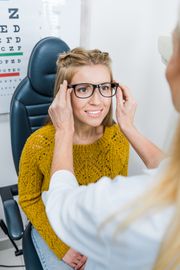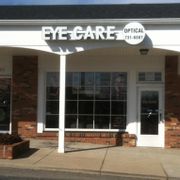
During a routine eye exam, an optometrist might discover you have astigmatism. Instead of the curvature of the cornea or lens being round like a marble, it’s ovoid like an egg. So you can protect your eyesight, below is a brief introduction to different types of astigmatisms and how you can correct the vision problems they cause.
Types of Astigmatisms
To help you see images clearly, the cornea and lens refract light onto the retina. When the structure’s curvature is round, you should be able to focus on objects nearby. If either structure is egg-shaped and there’s a disparity in the curves, the light won’t refract correctly. If a cornea has mismatched curves, a patient is diagnosed with corneal astigmatism. A mismatched lens is referred to as lenticular astigmatism. Depending on the direction and steepness of the curve, blurred vision is concentrated vertically, horizontally, or diagonally. People can be born with the condition, or it can develop after an injury, illness, or procedure. It’s not uncommon to have astigmatism in conjunction with nearsightedness or farsightedness.
How to Treat Them
 If you’re diagnosed with astigmatism after an eye exam, your doctor could recommend various options based on the severity of your condition. To improve comfort, they might recommend wearing corrective contact lenses, which are designed to balance out curvature problems. An optician can also craft glasses with corrective lenses. You could also opt for a procedure called orthokeratology, which involves wearing special contacts for a specific period to reshape the cornea or lens gradually. Eye surgery can also correct imperfections.
If you’re diagnosed with astigmatism after an eye exam, your doctor could recommend various options based on the severity of your condition. To improve comfort, they might recommend wearing corrective contact lenses, which are designed to balance out curvature problems. An optician can also craft glasses with corrective lenses. You could also opt for a procedure called orthokeratology, which involves wearing special contacts for a specific period to reshape the cornea or lens gradually. Eye surgery can also correct imperfections.
If you’re not sure whether you have astigmatism or need treatment for the condition, contact the professionals at Eye Care Optical in Cincinnati, OH. These optometrists provide comprehensive eye exams to diagnose and treat a wide range of issues. Their representatives will show you eyewear options to flatter your face and maximize comfort. To schedule an eye exam in Hamilton County, call (513) 731-6587. Visit the center online to see treatment options.
About the Business
Have a question? Ask the experts!
Send your question

